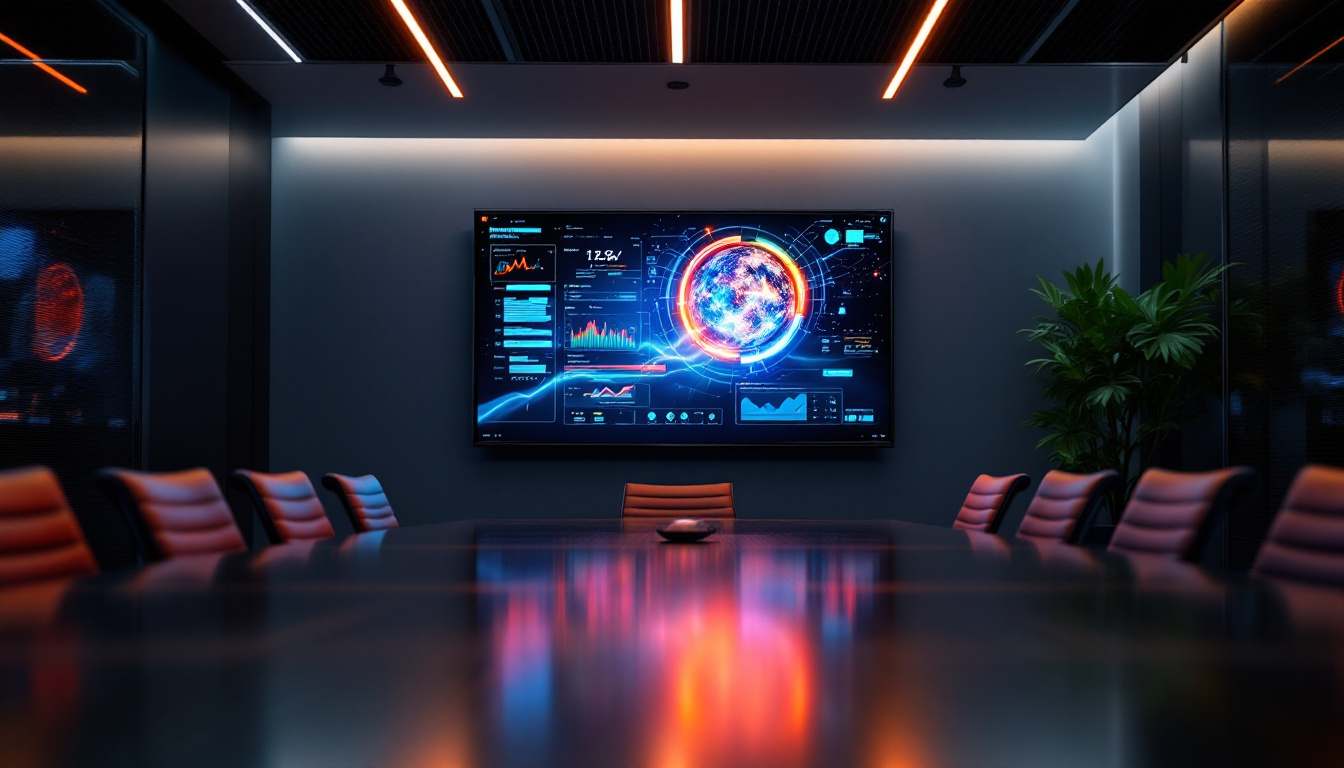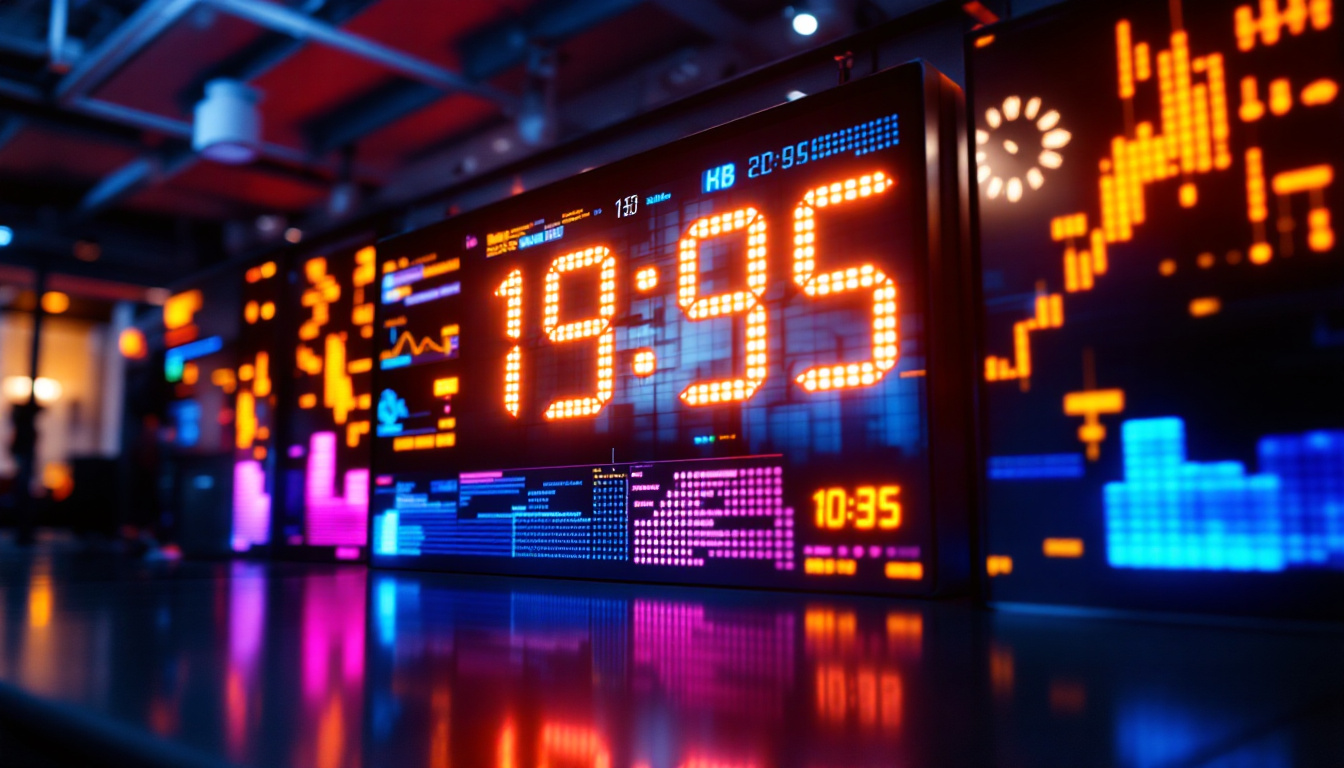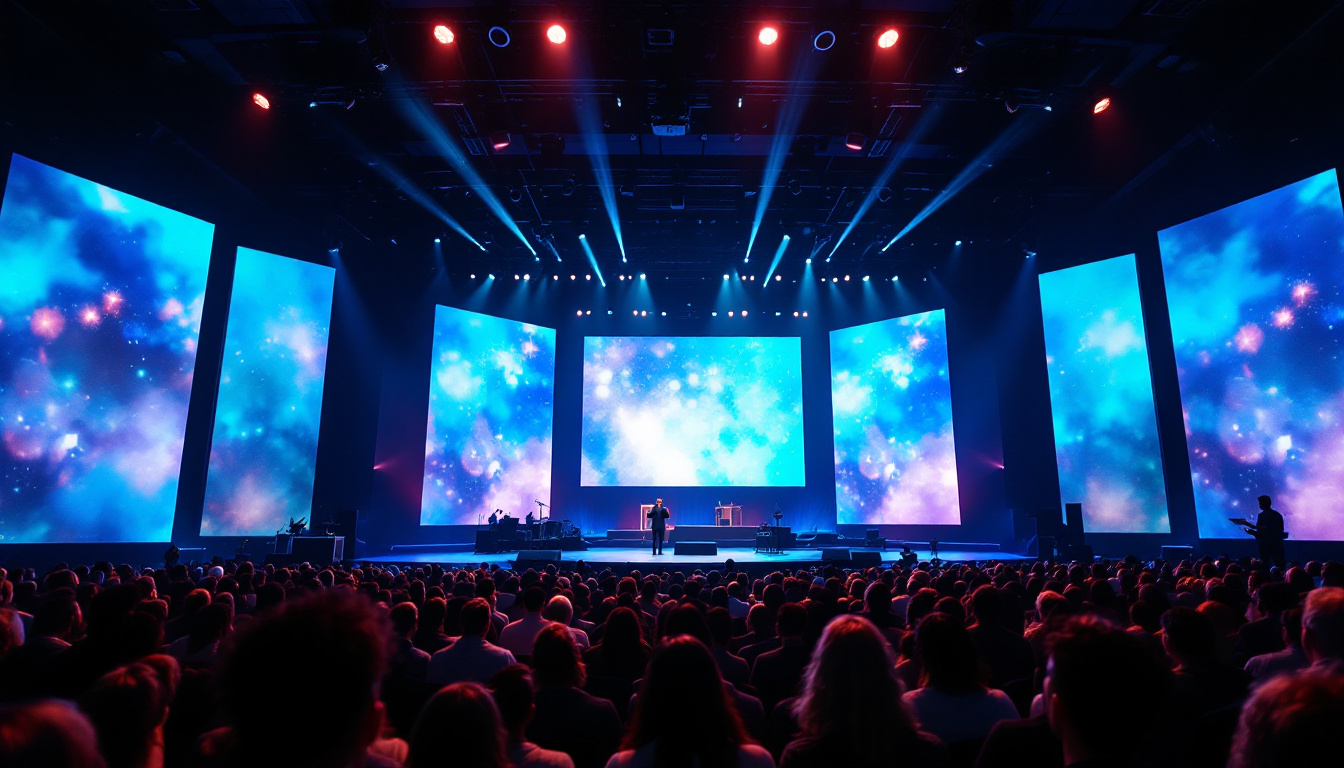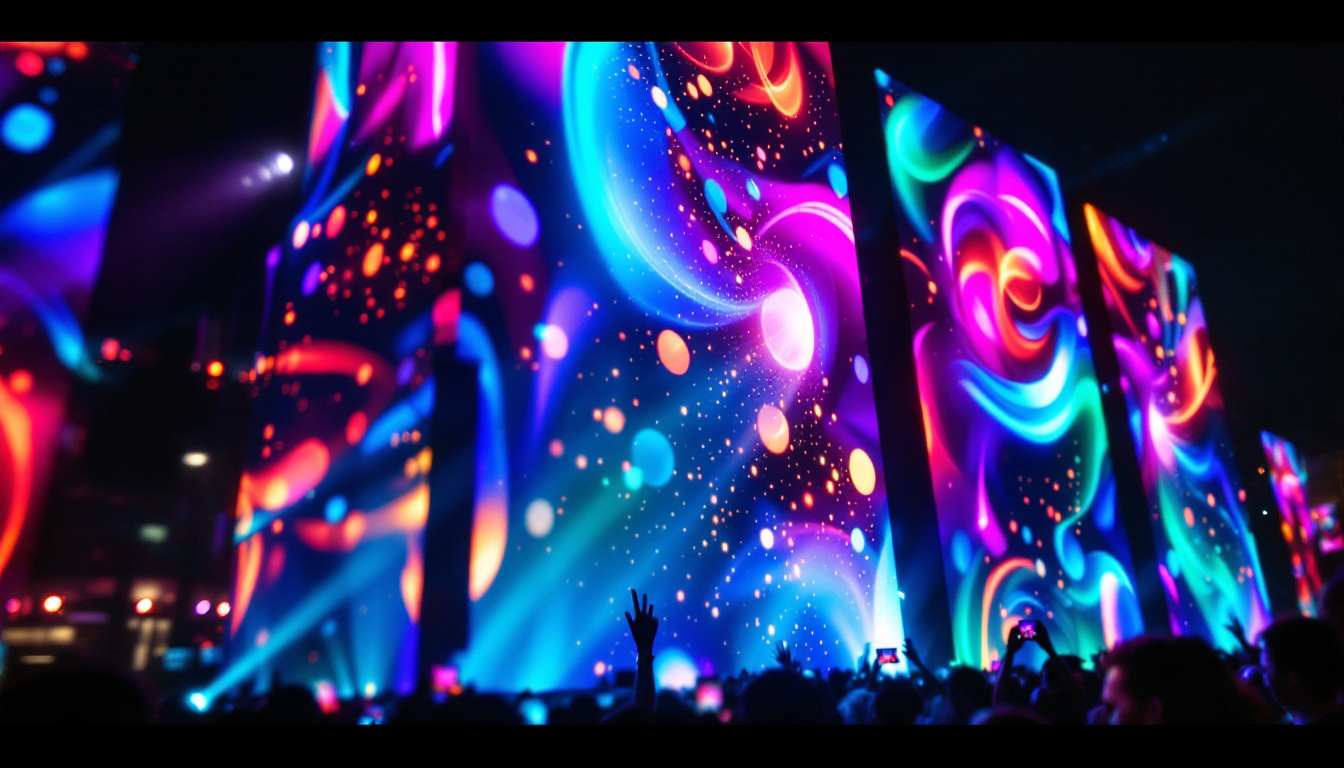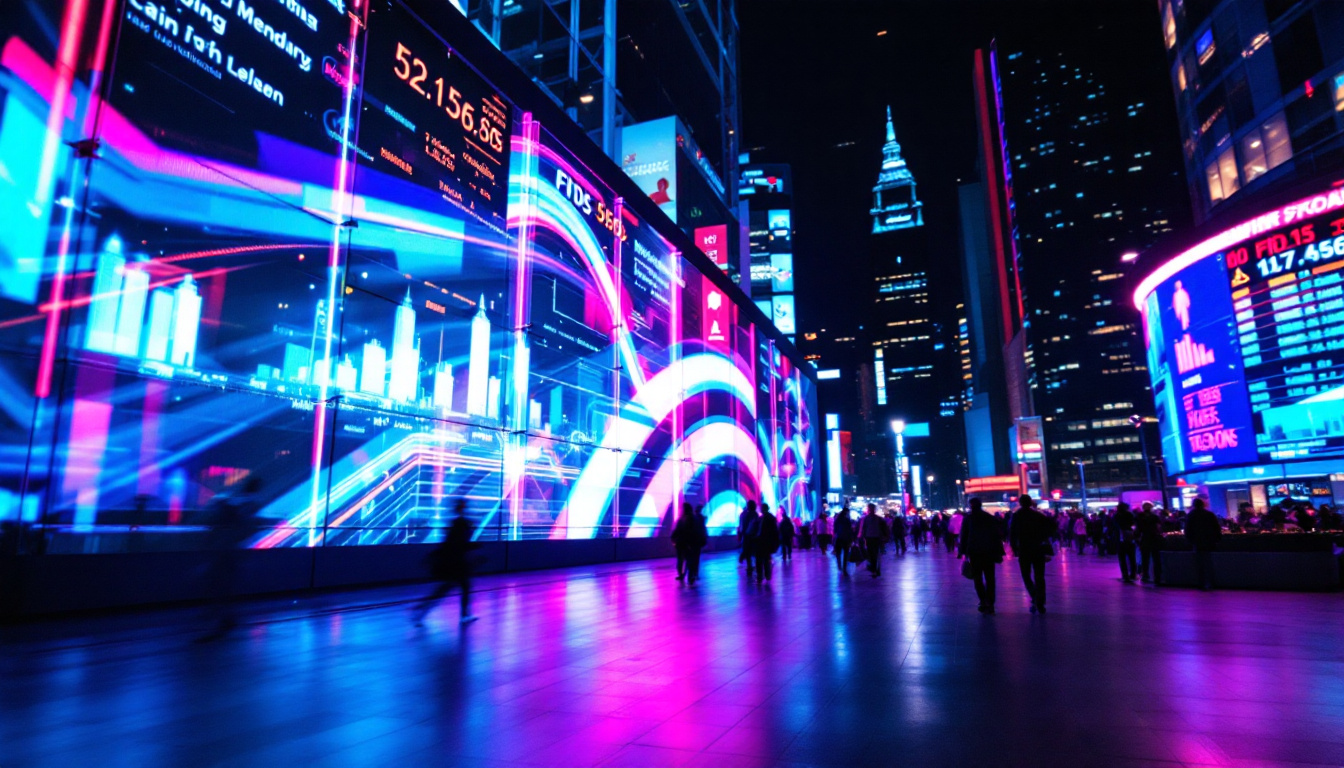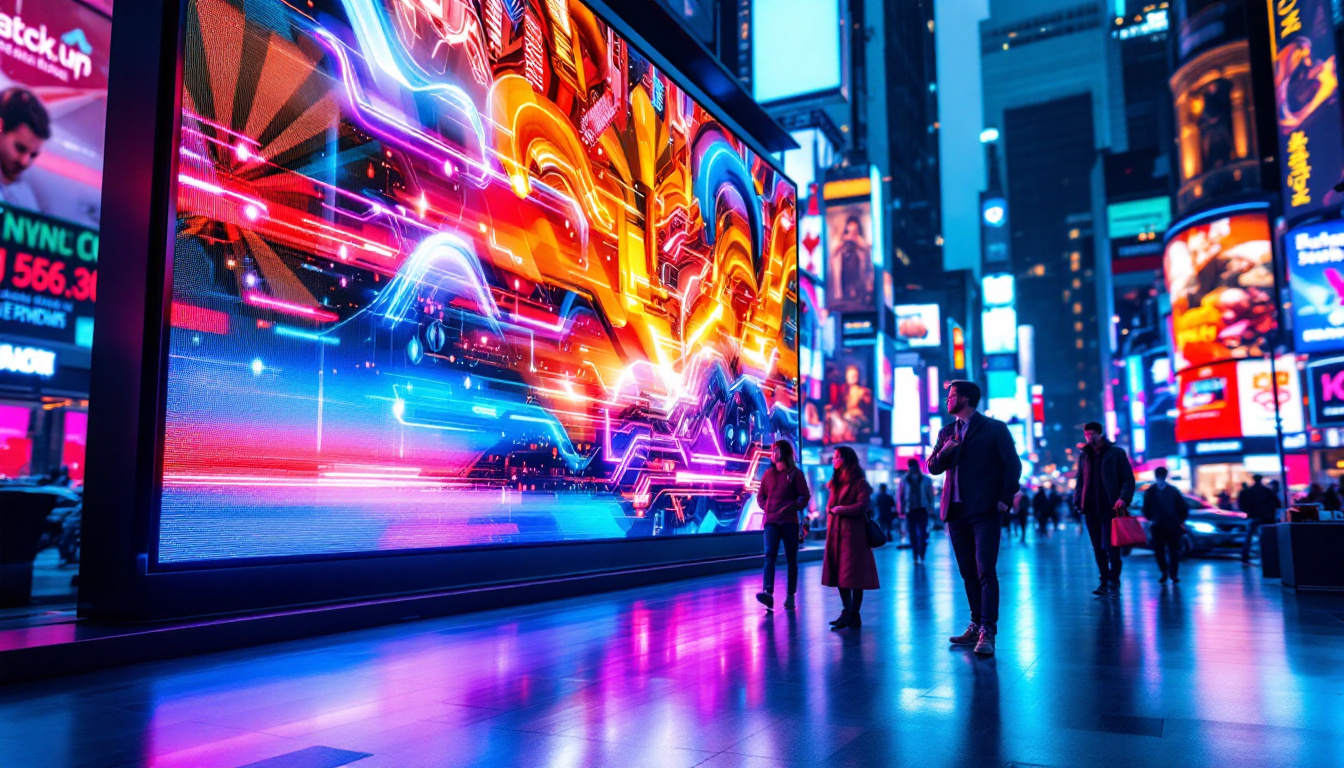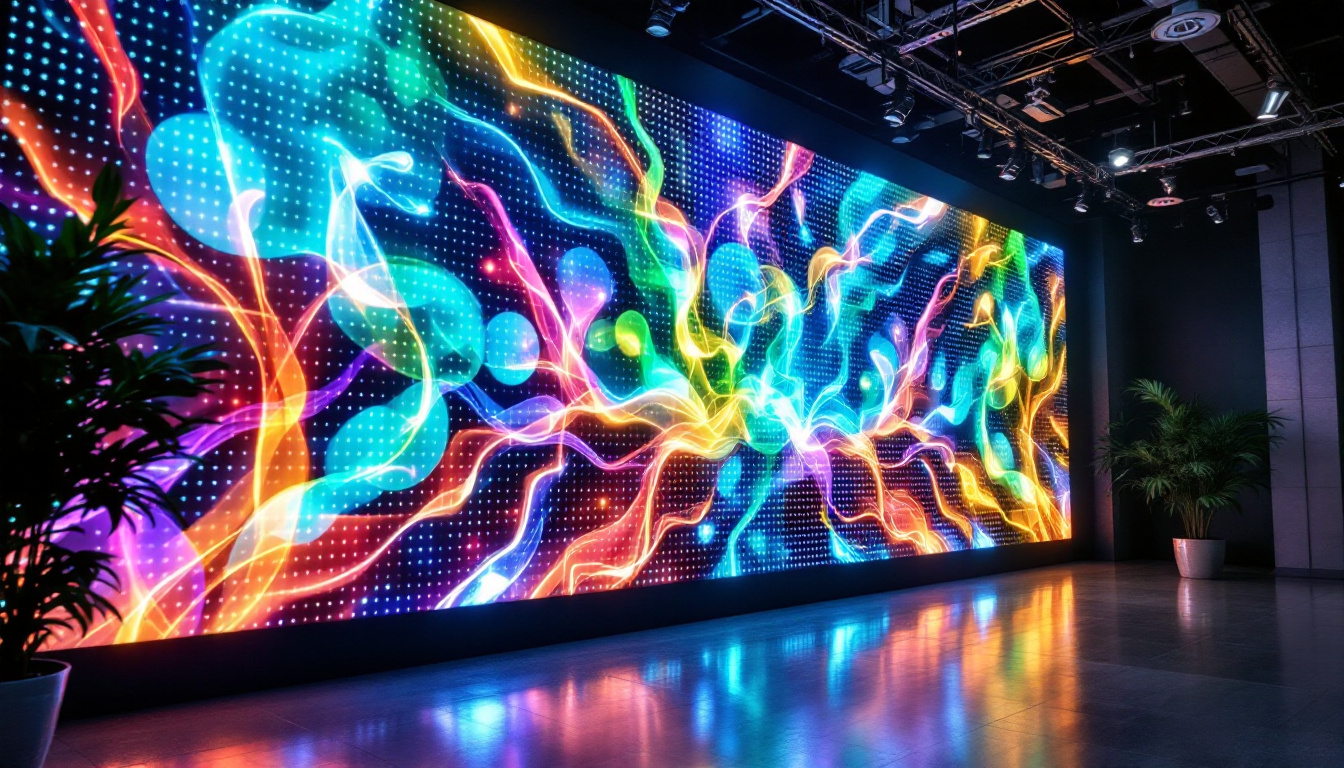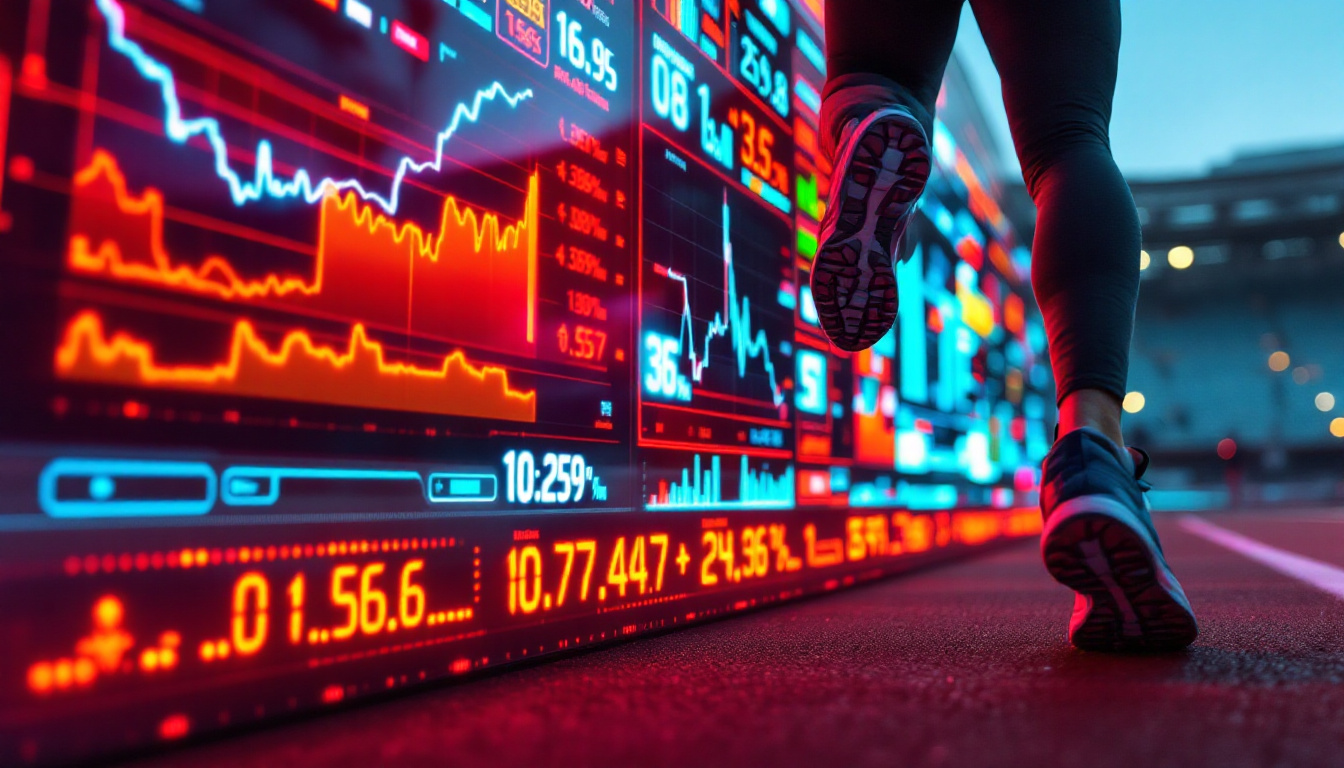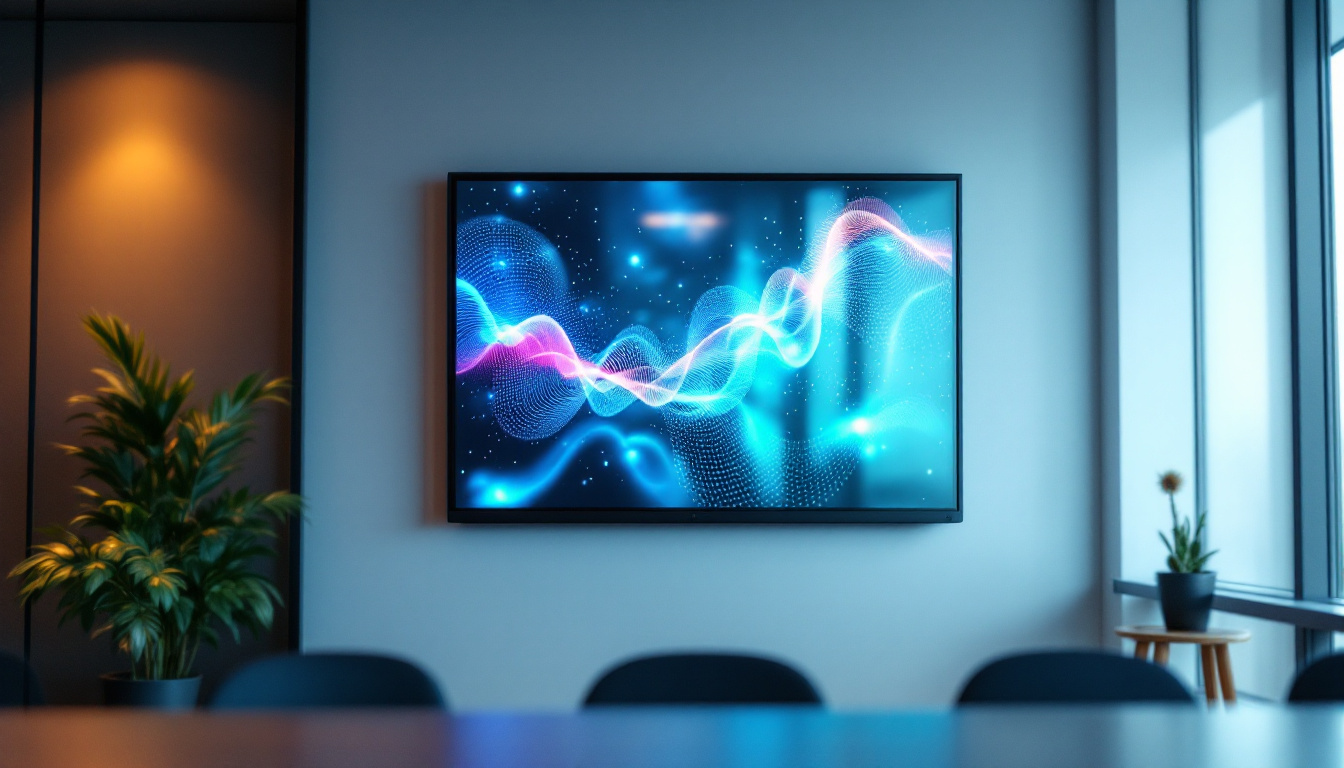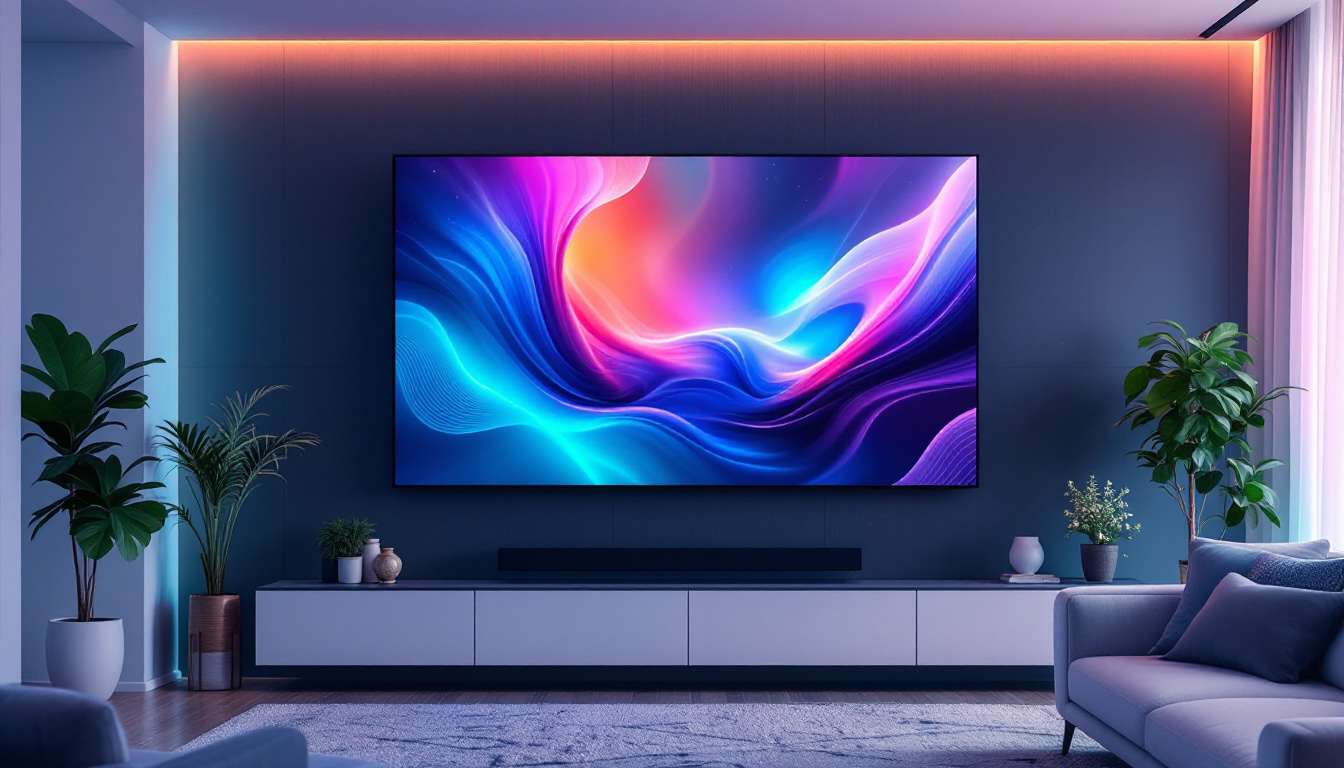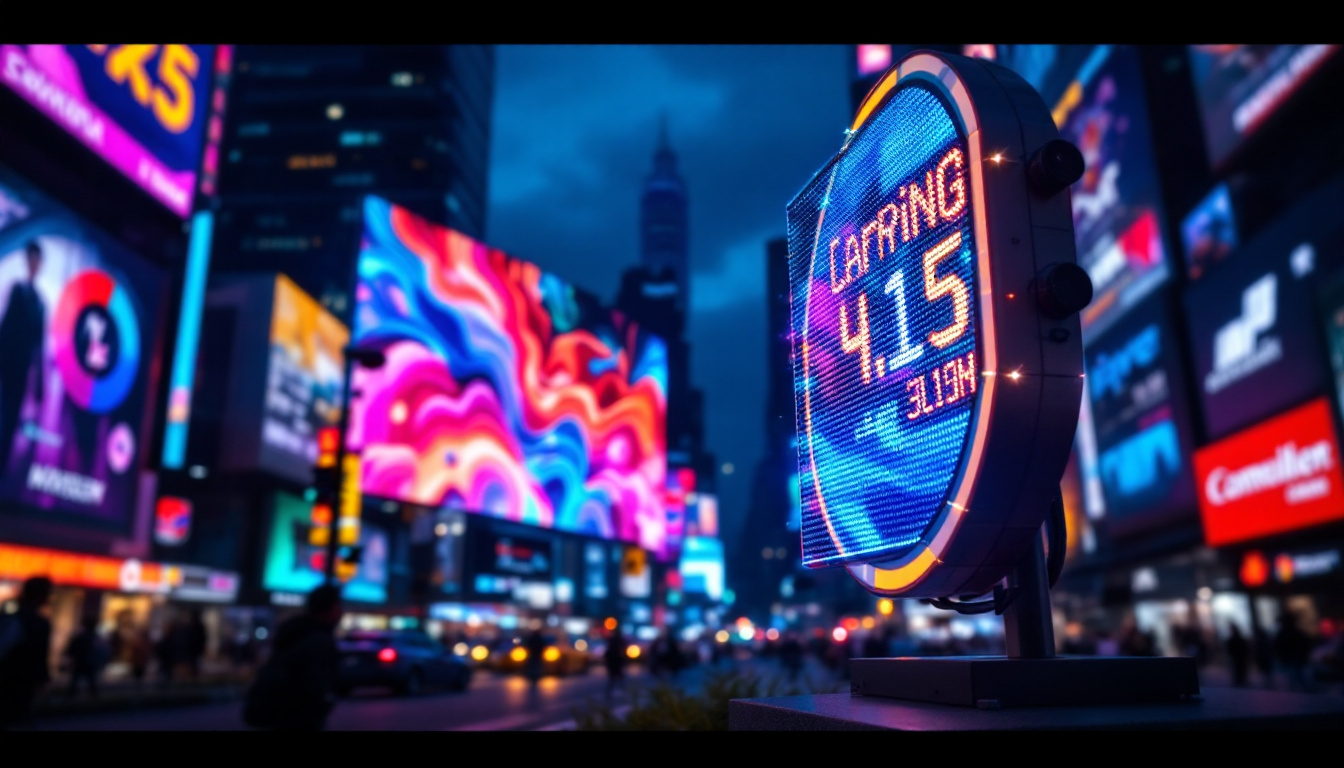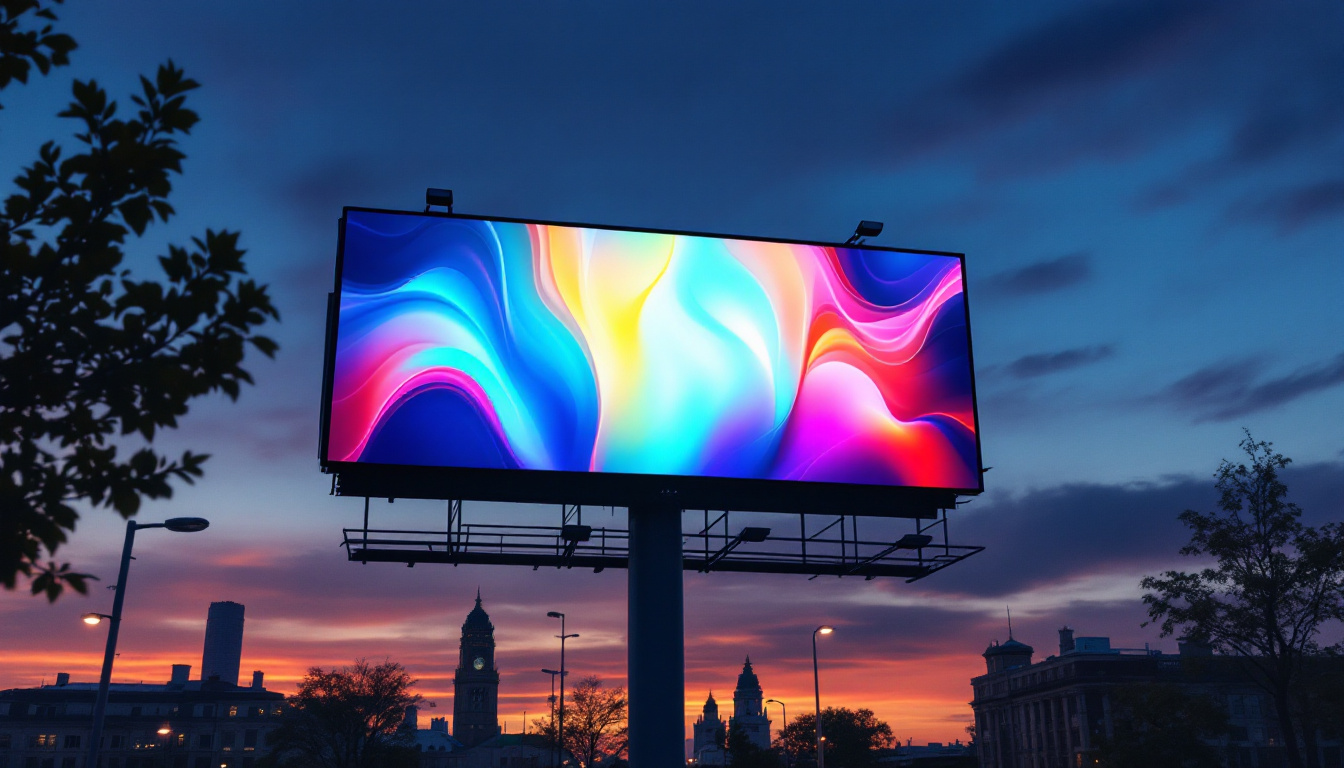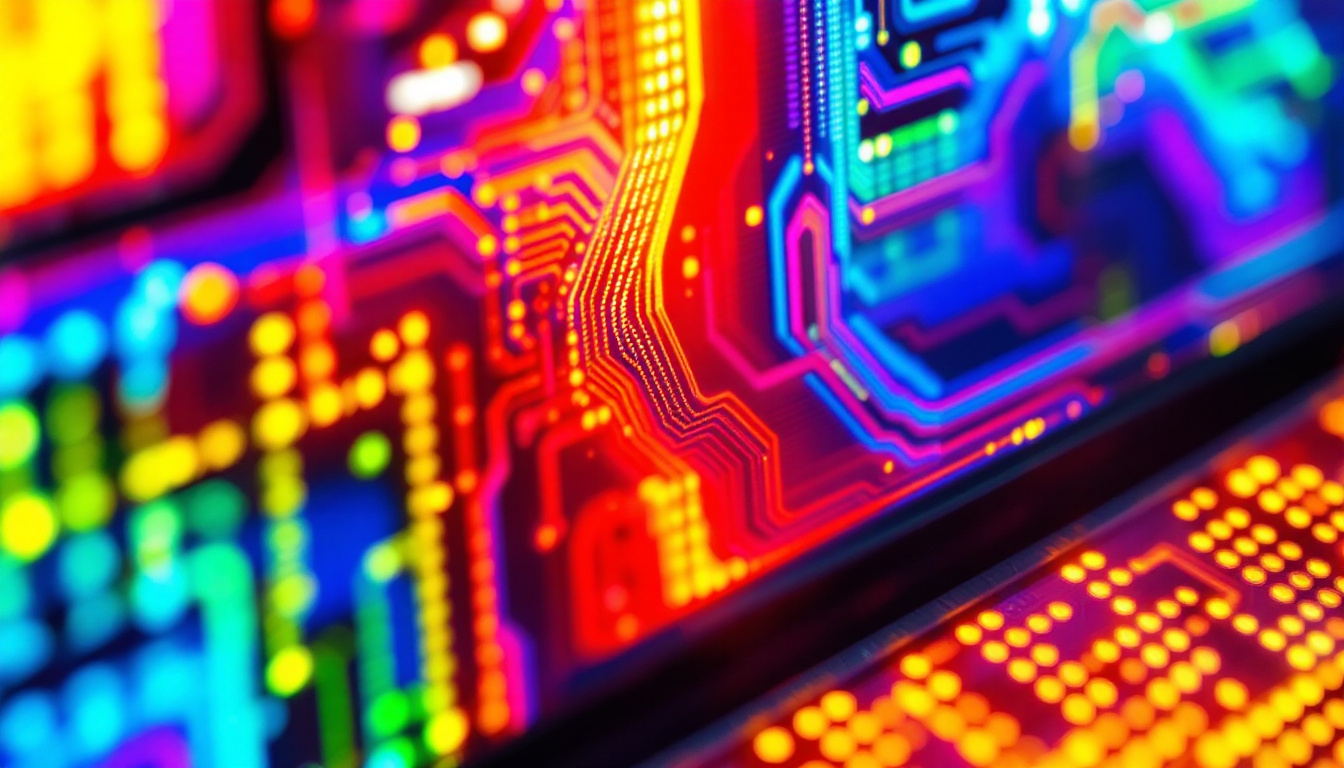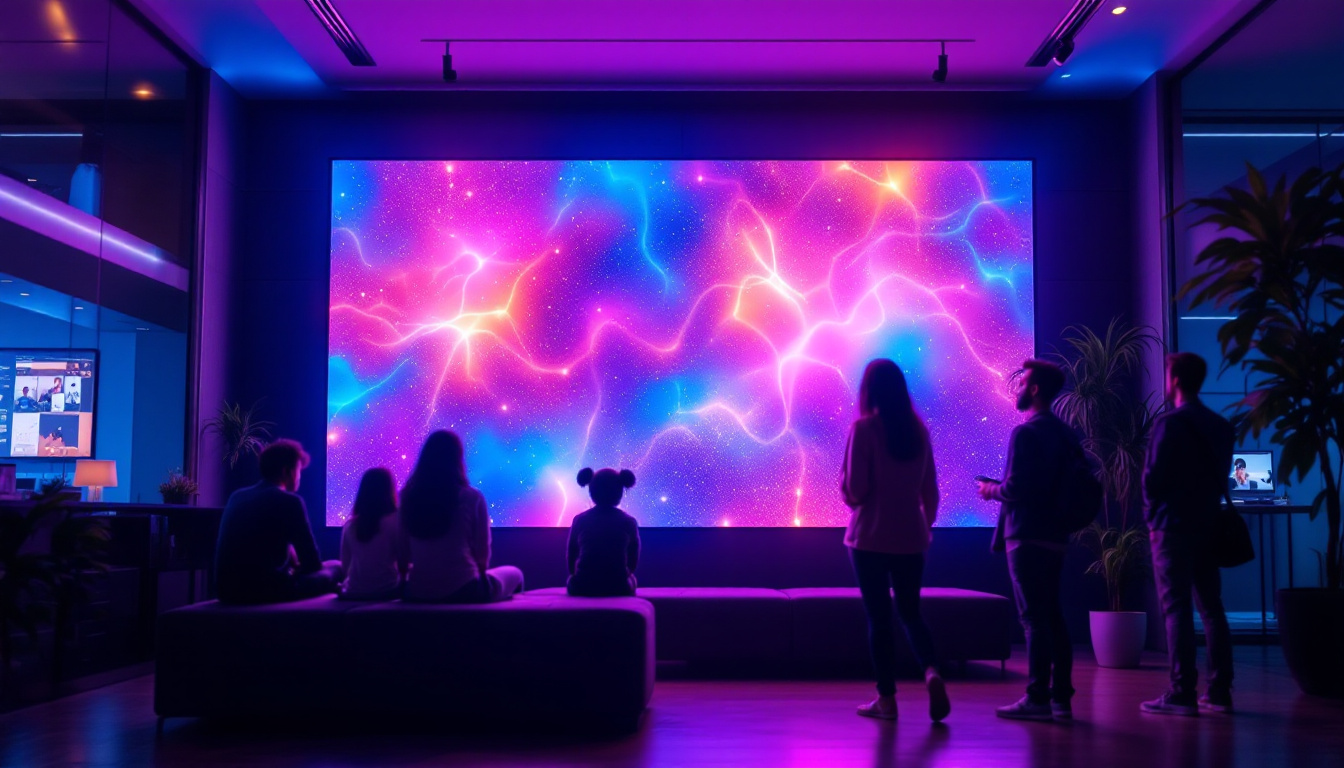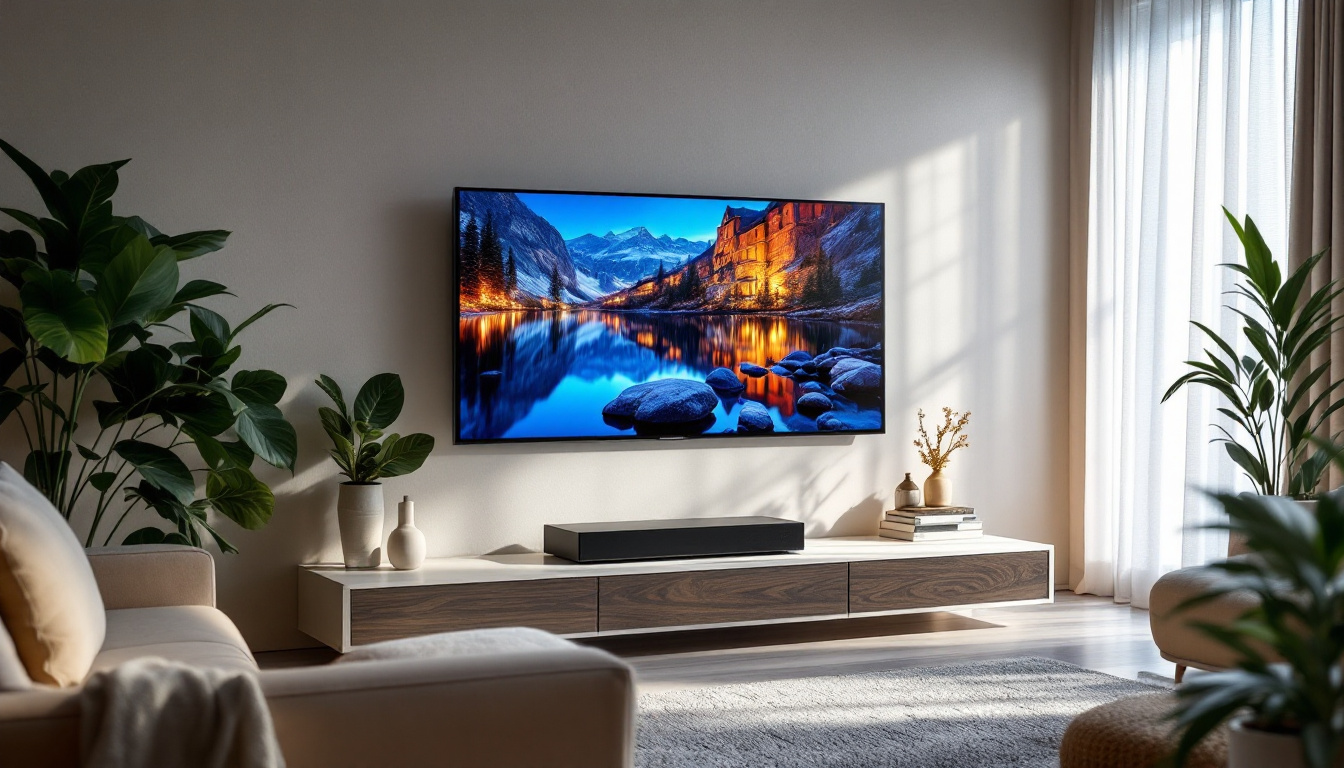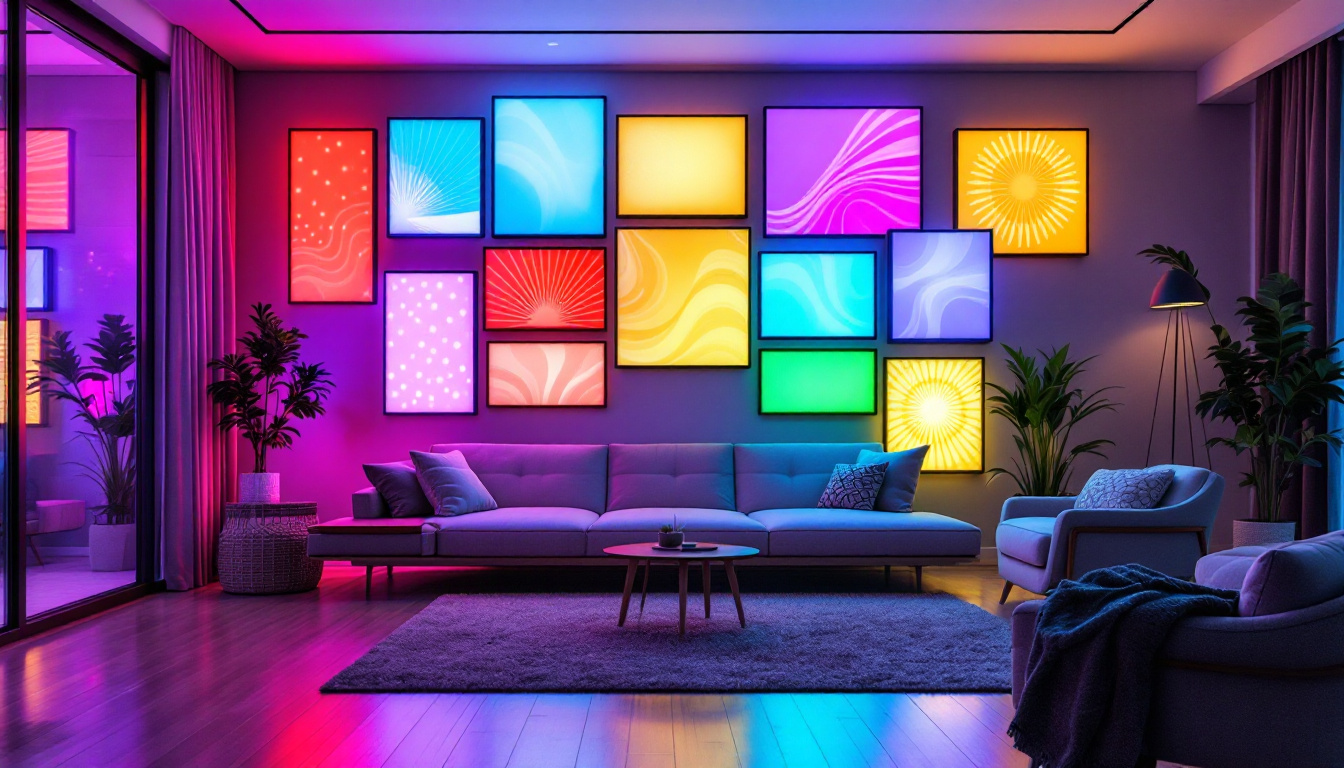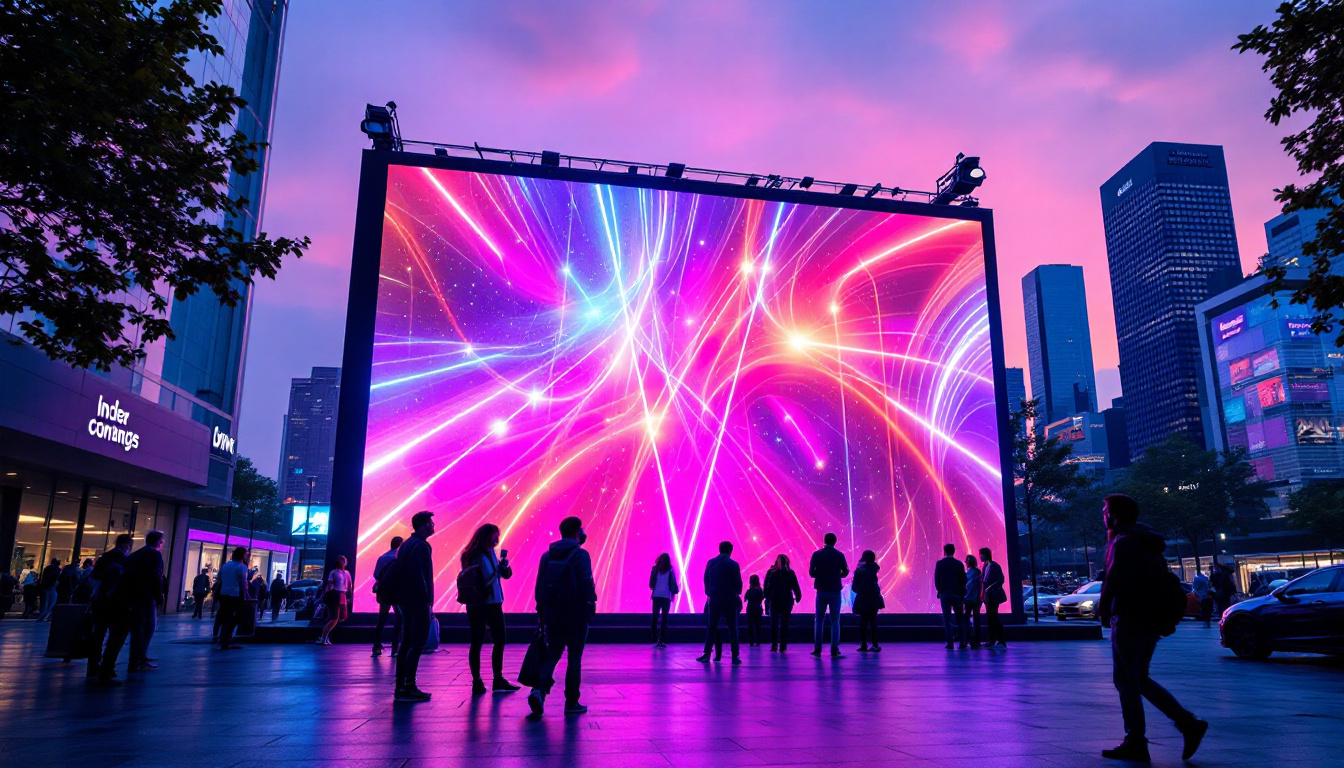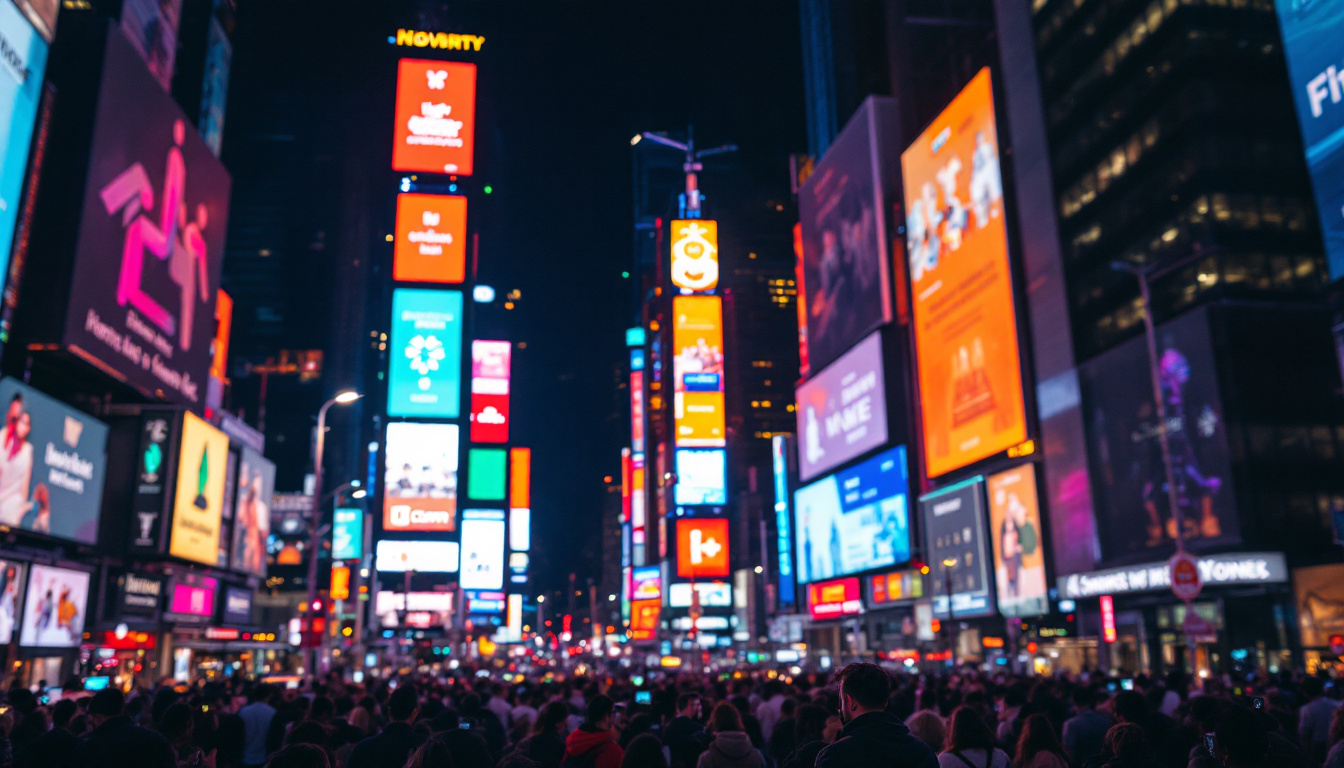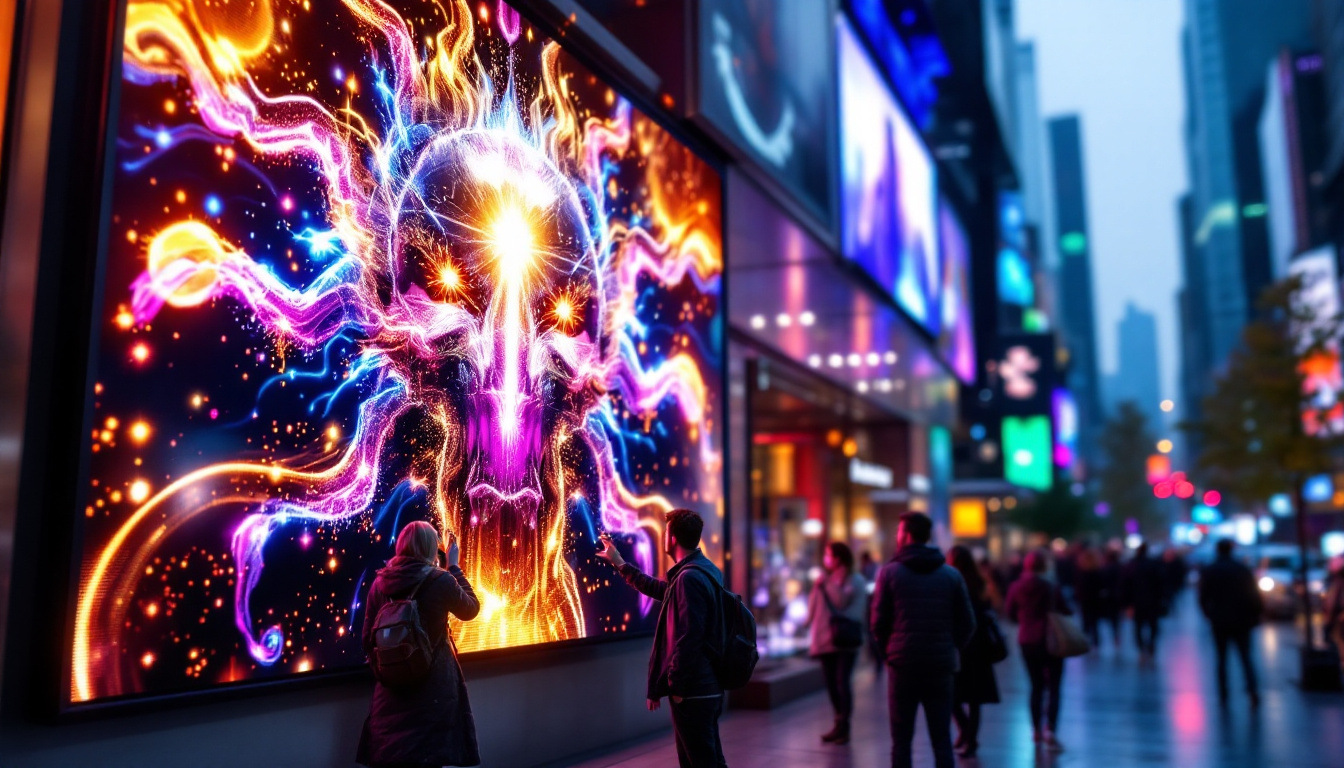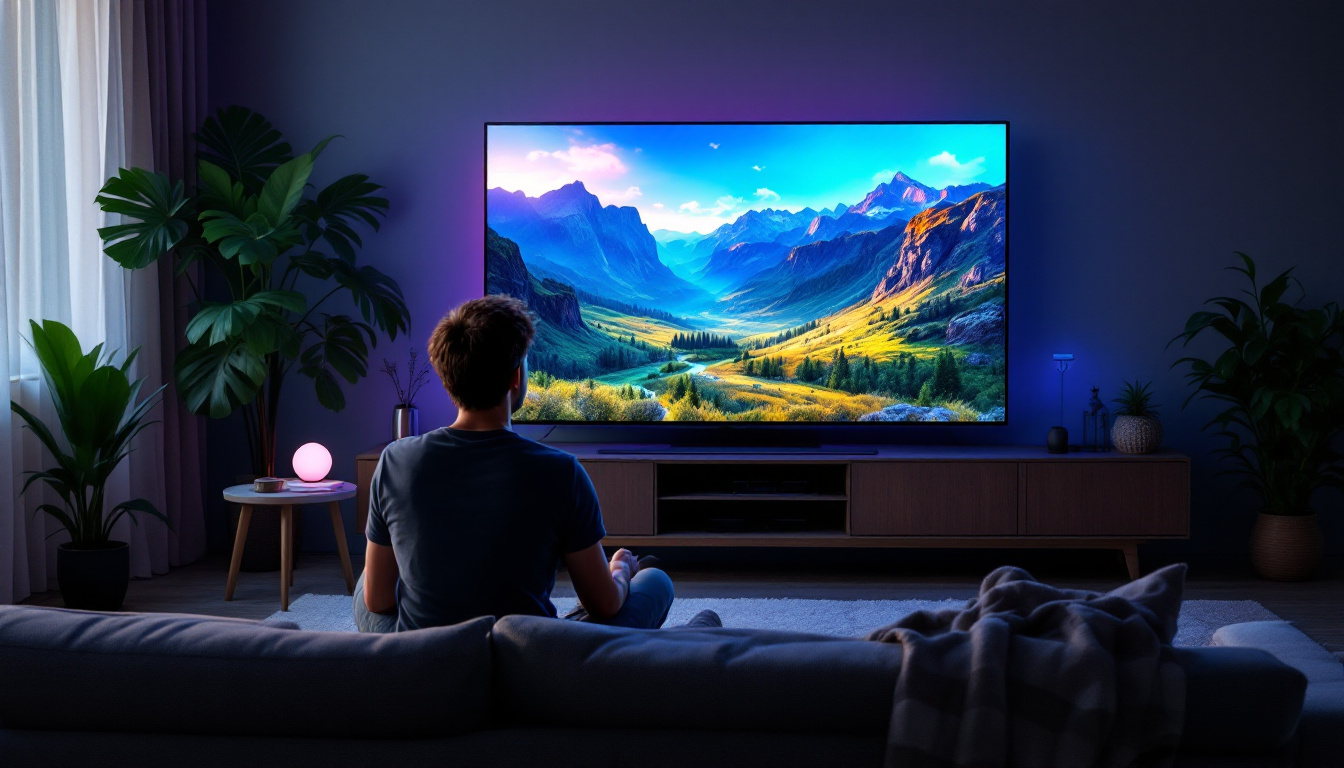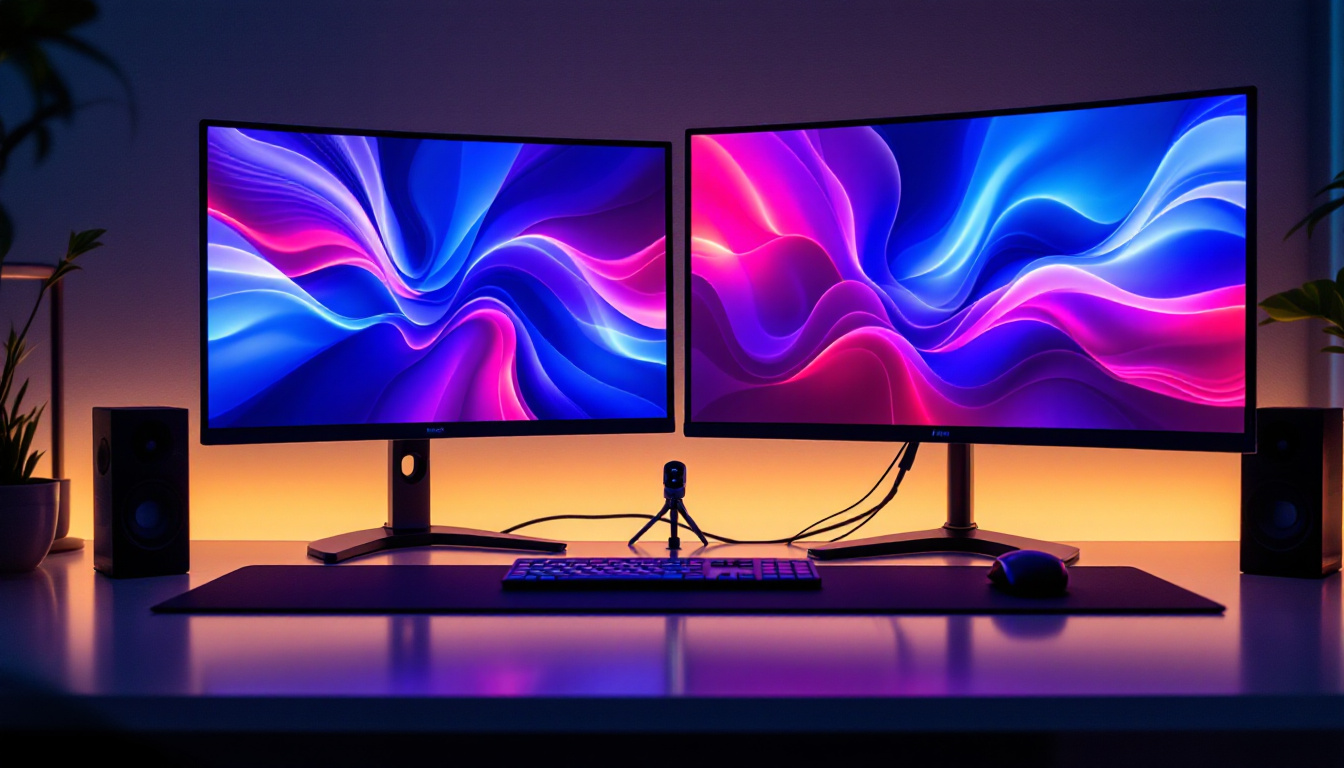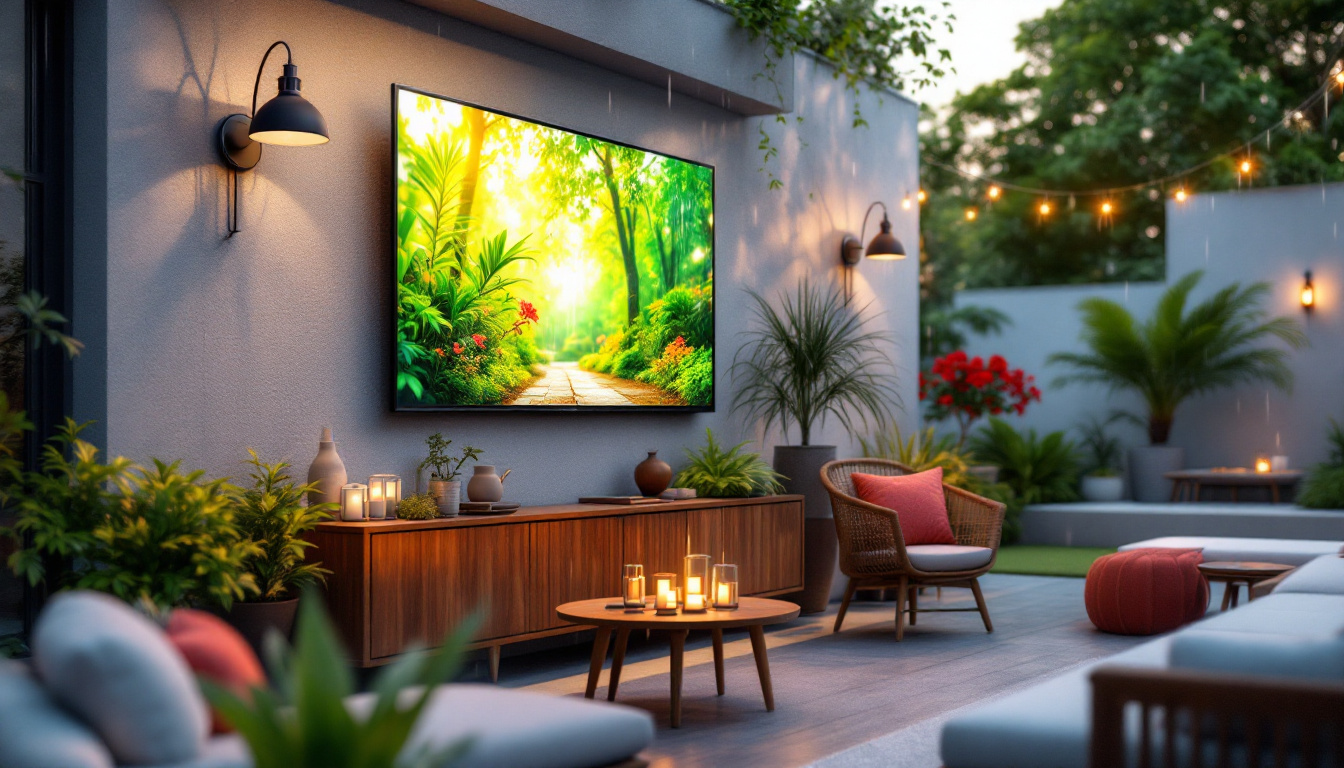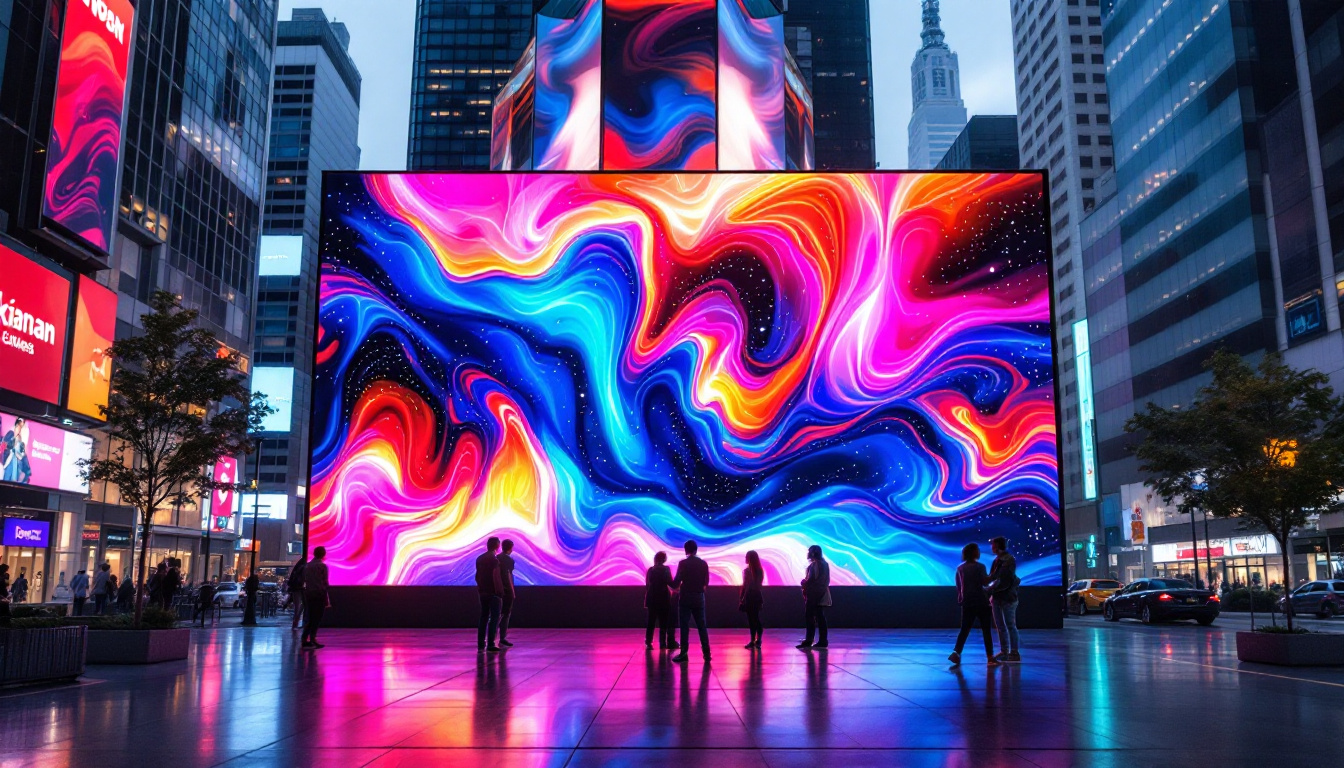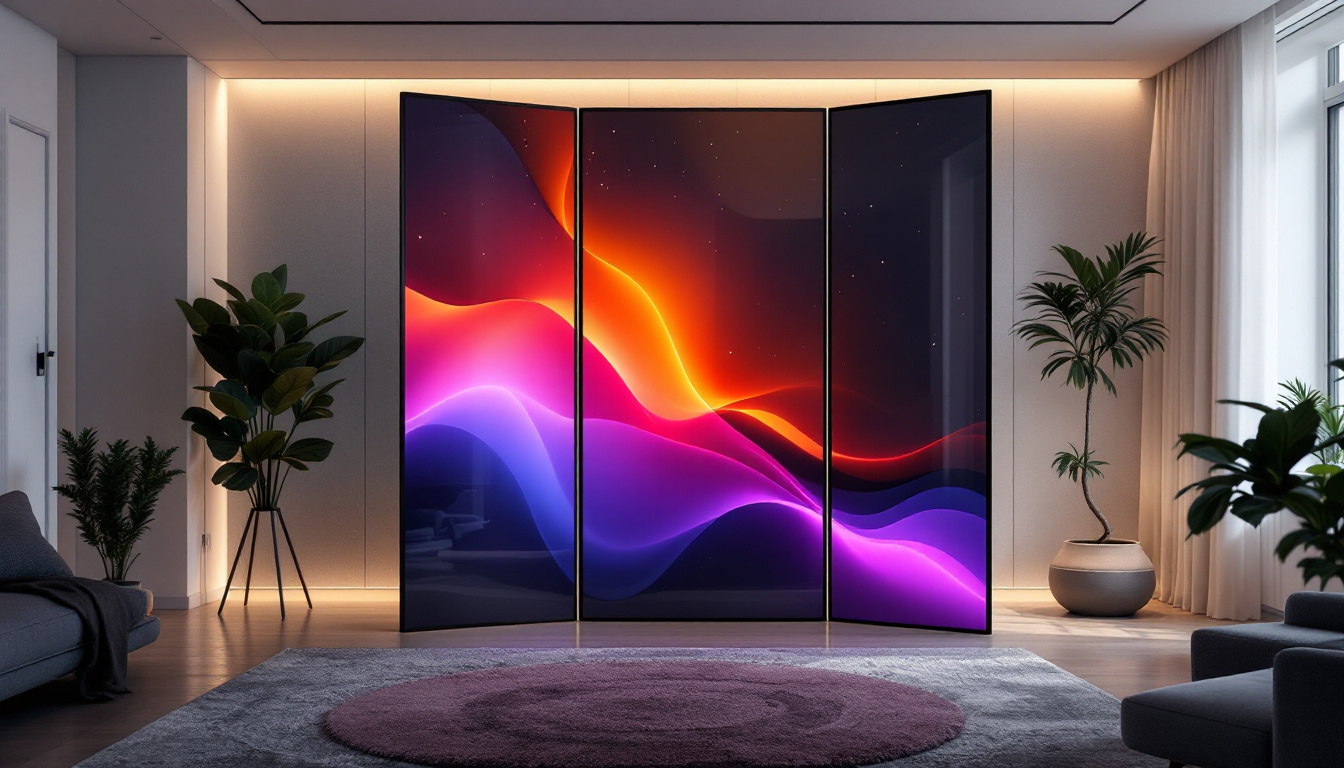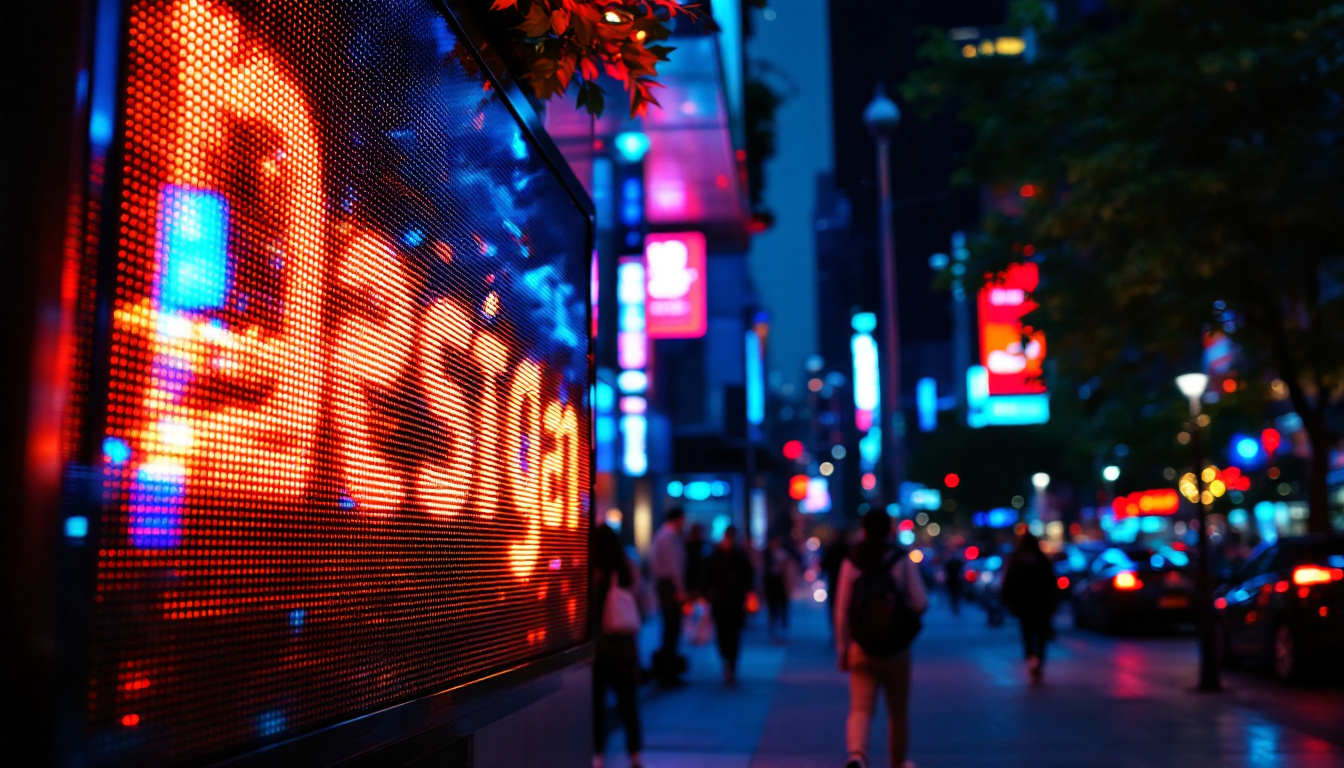In the modern business environment, effective communication is paramount. One of the most innovative tools that companies are adopting to enhance their communication strategies is the LED display. These displays have transformed boardrooms and conference spaces, offering a dynamic way to present information. This article delves into the intricacies of LED displays, exploring their benefits, applications, and the technology behind them.
Understanding LED Displays
LED displays, or Light Emitting Diode displays, are a type of flat panel display that uses LEDs as pixels for video and image display. They are known for their brightness, energy efficiency, and versatility. Unlike traditional LCD screens, LED displays can produce more vibrant colors and deeper blacks, making them ideal for various environments, including boardrooms. Their ability to maintain clarity and color accuracy even in brightly lit spaces has made them a popular choice for businesses looking to enhance their visual presentations and engage audiences more effectively.
How LED Displays Work
The technology behind LED displays is fascinating. At their core, these displays consist of numerous tiny LEDs that emit light when an electric current passes through them. The arrangement of these LEDs can vary, leading to different types of displays, such as direct-view LED and LED-backlit LCD screens. Direct-view LED displays are particularly popular in large venues due to their ability to create seamless images across vast surfaces. This seamlessness is crucial for events like concerts or sports games, where a continuous visual experience is essential for audience engagement.
Each pixel in an LED display is made up of red, green, and blue LEDs, which combine in various intensities to create a wide spectrum of colors. This RGB color model allows for high-quality images and videos, making LED displays suitable for presentations, video conferencing, and even digital signage. The rapid response time of LEDs also means that they can display fast-moving images without motion blur, making them ideal for dynamic content such as live broadcasts or interactive displays.
Types of LED Displays
LED displays come in various forms, each designed for specific applications. The most common types include:
- Indoor LED Displays: These are designed for use in indoor environments, such as conference rooms and retail spaces. They typically have a higher pixel density, which allows for clearer images at close viewing distances. This makes them perfect for environments where detailed visuals are crucial, such as in art galleries or museums, where every detail matters.
- Outdoor LED Displays: Built to withstand the elements, outdoor displays are brighter and more durable. They are often used for advertising and public information displays, where visibility is crucial. These displays are engineered to resist weather conditions like rain and extreme temperatures, ensuring that advertisements remain visible and effective regardless of the weather.
- Transparent LED Displays: These innovative displays allow for visibility through the screen, making them ideal for retail environments where showcasing products is essential. They can be used in storefronts to create eye-catching displays that do not obstruct the view of the products behind them, merging digital content with physical merchandise in a way that enhances customer experience.
Additionally, there are also flexible LED displays that can be bent or shaped to fit unique designs, allowing for creative installations in architectural projects or art installations. This adaptability opens up new possibilities for designers and advertisers, enabling them to push the boundaries of traditional display formats and create immersive experiences that captivate audiences.
Benefits of LED Displays in Boardrooms
Integrating LED displays into boardrooms offers numerous advantages that can significantly enhance the efficiency and effectiveness of meetings. Here are some key benefits:
Enhanced Visual Clarity
One of the primary advantages of LED displays is their superior visual clarity. The high brightness levels and contrast ratios ensure that presentations are visible even in well-lit environments. This clarity reduces the chances of miscommunication and ensures that all participants can engage with the content being presented. Moreover, LED displays provide a wider viewing angle, allowing attendees seated at various positions around the table to see the content without straining their necks or squinting. This feature is particularly advantageous in larger boardrooms where seating arrangements can vary widely.
Energy Efficiency
LED technology is known for its energy efficiency. Compared to traditional display technologies, LED displays consume less power, which can lead to significant cost savings over time. This is particularly beneficial for organizations looking to reduce their carbon footprint while maintaining high-quality visual presentations. Additionally, many LED displays come equipped with smart sensors that adjust brightness based on ambient light conditions, further optimizing energy consumption. This not only contributes to lower utility bills but also extends the lifespan of the display, making it a wise investment for any organization.
Versatility and Customization
LED displays are incredibly versatile. They can be configured in various sizes and shapes to fit different spaces and requirements. Whether a company needs a large screen for a conference room or multiple smaller displays for collaborative workspaces, LED technology can accommodate these needs. Furthermore, many LED displays support content management systems, allowing users to customize the displayed content easily. This adaptability extends to the types of content that can be shown, from live data feeds and video conferencing to interactive presentations and digital signage, enabling organizations to tailor their messaging to suit the audience and occasion.
Improved Collaboration
Another significant benefit of LED displays in boardrooms is their ability to enhance collaboration among team members. With features like screen sharing and wireless connectivity, participants can easily present their ideas and documents in real-time, fostering a more interactive and engaging atmosphere. This immediacy encourages spontaneous brainstorming sessions and allows for quick feedback, which can lead to more innovative solutions. Additionally, the integration of video conferencing capabilities into LED displays facilitates remote participation, ensuring that all stakeholders, regardless of location, can contribute effectively to discussions.
Durability and Low Maintenance
LED displays are designed to be robust and durable, making them an excellent choice for high-traffic environments like boardrooms. Unlike traditional projection systems, which may require frequent bulb replacements and maintenance, LED technology boasts a longer lifespan and lower maintenance needs. This reliability means that organizations can focus more on their meetings and less on technical issues, ensuring a smoother workflow. Furthermore, many LED displays are built to withstand varying environmental conditions, making them suitable for different settings, from corporate offices to outdoor venues.
Applications of LED Displays in Business Settings
The applications of LED displays in business settings are vast and varied. From enhancing presentations to facilitating collaboration, these displays serve multiple purposes:
Presentations and Meetings
In boardrooms, LED displays can transform the way presentations are delivered. With their vibrant colors and sharp images, they capture attention and enhance engagement. Presenters can share complex data visualizations, videos, and interactive content seamlessly, making meetings more productive.
Video Conferencing
As remote work becomes increasingly common, video conferencing has become a staple in business communication. LED displays can enhance video conferencing setups by providing a large, clear screen for participants to view. This ensures that all attendees, whether in-person or remote, can see and hear each other clearly, fostering better collaboration.
Digital Signage
LED displays are also widely used for digital signage within organizations. They can be employed to display important announcements, schedules, or even employee recognition. This not only keeps staff informed but also contributes to a positive workplace culture.
Choosing the Right LED Display for Your Boardroom
Selecting the right LED display for a boardroom involves considering several factors to ensure it meets the specific needs of the organization. Here are some key considerations:
Size and Resolution
The size of the LED display should be determined by the boardroom’s dimensions and the typical distance from which participants will view the screen. Additionally, resolution plays a critical role in image quality. Higher resolution displays provide clearer images, which is particularly important for detailed presentations.
Brightness and Contrast
Brightness levels are essential, especially in rooms with ample natural light. A display with higher brightness ensures that content remains visible without straining the eyes. Similarly, a good contrast ratio enhances the overall viewing experience, making images and text stand out more effectively.
Connectivity Options
Modern boardrooms often utilize various devices for presentations, including laptops, tablets, and smartphones. Therefore, it is crucial to choose an LED display with multiple connectivity options, such as HDMI, USB, and wireless capabilities. This flexibility allows for seamless integration with existing technology.
Installation and Maintenance of LED Displays
Installing an LED display in a boardroom is a critical step that requires careful planning and execution. Proper installation ensures optimal performance and longevity of the display.
Installation Considerations
When installing an LED display, factors such as mounting options, room acoustics, and viewing angles must be taken into account. Professional installation is recommended to ensure that the display is securely mounted and positioned for the best viewing experience. Additionally, integrating the display with existing AV systems can enhance functionality.
Regular Maintenance
To keep LED displays functioning optimally, regular maintenance is essential. This includes cleaning the screen to remove dust and fingerprints, checking connections, and ensuring that software is updated. Many manufacturers offer maintenance plans that can help organizations manage these tasks efficiently.
Future Trends in LED Display Technology
The landscape of LED display technology is continually evolving, with new advancements emerging regularly. Understanding these trends can help organizations stay ahead of the curve.
Advancements in MicroLED Technology
MicroLED technology is poised to revolutionize the display industry. This technology uses microscopic LEDs, allowing for even higher resolutions and improved color accuracy. MicroLED displays are also more energy-efficient and can be produced in various shapes and sizes, making them ideal for unique boardroom setups.
Integration with Smart Technology
The integration of LED displays with smart technology is another trend gaining momentum. Smart displays can connect to the internet, allowing for real-time updates and remote management. This capability enhances collaboration and ensures that content is always current and relevant.
Increased Use of Augmented Reality
augmented reality (AR) is becoming more prevalent in business presentations. LED displays can be used to project AR content, providing an immersive experience that enhances understanding and engagement. This technology is particularly useful in industries such as architecture, engineering, and education.
Conclusion
LED displays have become an integral part of modern boardrooms, offering numerous benefits that enhance communication and collaboration. From their superior visual clarity to their energy efficiency and versatility, these displays are transforming how businesses operate. As technology continues to advance, organizations that embrace LED displays will be better equipped to meet the demands of the evolving workplace.
Investing in the right LED display can significantly impact productivity and engagement in boardroom settings. By understanding the various types, applications, and future trends of LED technology, businesses can make informed decisions that align with their communication goals. As the digital landscape continues to evolve, LED displays will undoubtedly play a crucial role in shaping the future of business communication.
Discover LumenMatrix LED Display Solutions
Ready to elevate your boardroom with the latest in LED display technology? Look no further than LumenMatrix, a pioneer in creating visually stunning and technologically advanced LED displays. Whether you’re interested in Indoor LED Wall Displays, Outdoor LED Wall Displays, or specialized solutions like Vehicle LED Displays, LED Sports Displays, or Custom LED Displays, LumenMatrix has the expertise to bring your vision to life. Embrace the future of visual communication and transform your business environment with our captivating LED solutions. Check out LumenMatrix LED Display Solutions today and see the difference for yourself.

